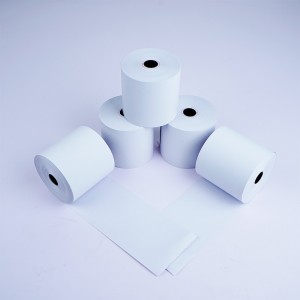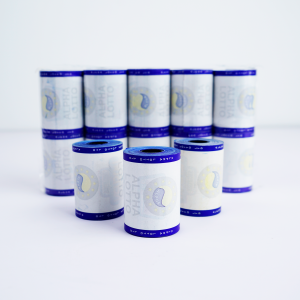
Thermal paper is a commonly used material in various industries including retail, banking and logistics. It’s coated with a special dye that changes color when heated, making it ideal for printing receipts, labels and barcode stickers. However, thermal paper cannot be recycled through traditional paper recycling methods due to the presence of chemicals and contaminants. Therefore, special processes are required to effectively handle and recycle thermal paper and minimize its impact on the environment. In this article, we will explore the steps involved in the processing and recycling of thermal paper.
The first step in the recycling process is collecting used thermal paper. This can be done through a variety of methods, such as placing dedicated collection bins in retail stores and offices, or working with recycling companies to collect thermal paper waste. Proper segregation is critical to ensure that only thermal paper is collected and not mixed with other types of paper.
Once collected, the thermal paper is transported to a recycling facility where it goes through a series of steps to remove dyes and other contaminants. The first step in the processing phase is called pulping, where the thermal paper is mixed with water to break it down into individual fibers. This process helps separate the dye from the paper fibers.
After pulping, the mixture is screened to remove any remaining solid particles and contaminants. The resulting liquid is then subjected to a flotation process, where air bubbles are introduced to separate the dye from the water. The dye is lighter and floats to the surface and is skimmed off, while the pure water is discarded.

The next step in the recycling process is to remove the chemicals present in thermal paper. These chemicals include bisphenol A (BPA), which acts as a developer for dyes on paper. BPA is a known endocrine disruptor that poses risks to human health and the environment. A variety of technologies, such as activated carbon adsorption and ion exchange, can be used to remove BPA and other chemicals from water.
Once the dyes and chemicals have been effectively removed from the water, the purified water can be reused or discharged after appropriate treatment. The remaining paper fibers can now be disposed of like traditional paper recycling methods. The pulp is washed, refined and bleached to improve its quality before it is used to make new paper products.
It should be noted that the recycling of thermal paper is a complex process that requires advanced technology and equipment. Therefore, it is critical for businesses and individuals who use thermal paper to work with an accredited recycling facility to ensure proper handling and recycling.
In conclusion, thermal paper, although widely used, presents recycling challenges due to the presence of chemicals and contaminants. The processing and recycling of thermal paper involves multiple steps, including pulping, flotation, chemical removal and fiber treatment. By implementing appropriate collection methods and working with recyclers, we can effectively reduce the environmental impact of thermal paper and promote sustainable waste management practices.
article source: https://www.zhongwen-mx.com/news/how-to-dispose-and-recycle-thermal-paper/
Media Contact
Company Name: Xinxiang Zhongwen Paper Industry
Email: Send Email
Country: China
Website: https://www.zhongwen-mx.com/
